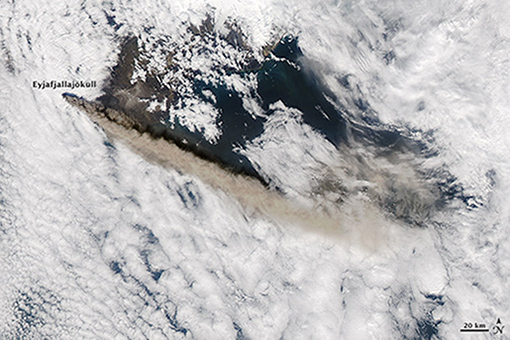Background
Eyjafjallajökull eruption 2010

MODIS satellite image 12. May 2010 (© NASA)
- Iceland is after Hawaii the second most active volcanic island.
- The last two volcanic eruptions happened in spring 2010 at Eyjafjallajökull and in May 2011 at Vatnajökull (Grimsvötn). Both eruptions were phreatomagmatic, i.e. a result of interaction between water and magma.
- Especially during the eruption of the glaciated Eyjafjallajökull volcano a huge amount of water vapour and ash was produced, leading to an interruption of air traffic over Europe for several days. 25 European countries were affected and the direct loss to airlines is estimated to exceed 1.3 billion Euros.

The early warning of another eruption can reduce the consequences for airlines, air passengers and air cargo companies as well as for the people living in the area.

